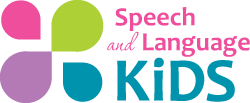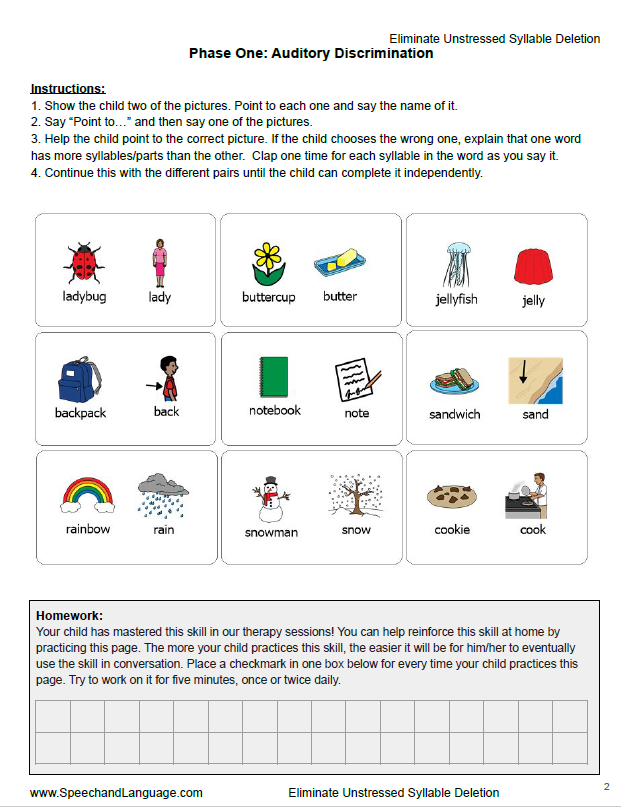Weak Syllable Deletion:
How to Treat Syllable Reduction in Children
“Umbrella” becomes “brella”
“Butterfly” becomes “buffly”
It’s common for young children to simplify long words by dropping out the weakest syllable.
But if a child is still doing this after 4 years of age, speech therapy exercises can help them speak more clearly.
On this page, we’ll show you how to help a child with weak syllable deletion. We’ll give you the steps to speech therapy and show you how to help the child include all syllables in their spoken words.
What is Weak Syllable Deletion / Syllable Reduction?
Unstressed syllable deletion, also known as weak syllable deletion or syllable reduction, is the phonological process that occurs when a child deletes one or more syllables from a multisyllabic word. For example, “umbrella” might become “brella”. This is common up through the age of 4 years. Then we expect it to disappear. If the child is still using that process after that, we can use these strategies:
Sample Goal for Weak Syllable Deletion:
Student will eliminate the process of unstressed syllable deletion by spontaneously producing all syllables in multi-syllabic words in sentences with at least 80% accuracy.
How to do Speech Therapy for Weak Syllable Deletion:
- Auditory Discrimination: Student will receptively identify the difference between two minimal pair words where the words sound the same except that one word is missing a syllable (example: butter and buttercup) with at least 80% accuracy.
- Production in Single Words: Student will produce all syllables in multisyllabic words with at least 80% accuracy.
- Production in Phrases: Student will produce all syllables in multi-syllabic words in 2-3 word phrases with at least 80% accuracy.
- Production in Sentences: Student will produce all syllables in multi-syllabic words in sentences with at least 80% accuracy.
What’s Next?
- At this point, you can either move on to another phonological process and see if this process generalizes on its own. Or, you can move on to our “carry-over and generalization” kit with this phonological process.
A Structured Curriculum for Phonological Processes:
When a child has multiple phonological errors, we can improve their ability to speak clearly by using a structured approach to phonology.
Our Phonology Curriculum contains pre-made lessons and step-by-step resources for treating phonological processes in speech therapy or at home.

About the Author: Carrie Clark, MA CCC-SLP
Hi, I’m Carrie! I’m a speech-language pathologist from Columbia, Missouri, USA. I’ve worked with children and teenagers of all ages in schools, preschools, and even my own private practice. I love digging through the research on speech and language topics and breaking it down into step-by-step plans for my followers.
Fun Fact: When my son was three, he once got mad at me and told me he was going to send me to Antarctica in nothing but a t-shirt. He had an overly large vocabulary for a 3-year-old….along with an overly large amount of sass. He still has both to this day.
Connect with Me:




Thank you so much for this useful video/ guide!
You are very welcome, Eli! Please let us know if you have any questions.
I don’t like this!!!!!!!!!!!!!!!!!!
Thank you so much for this useful video/ guide!
Thank you so much for this useful video
You are very welcome!